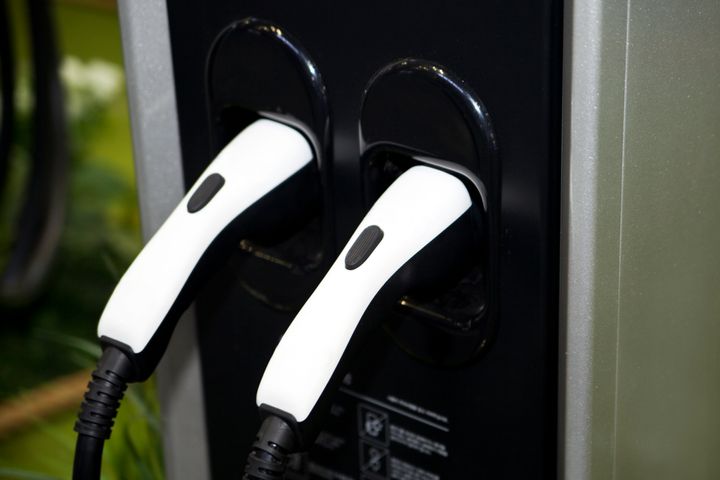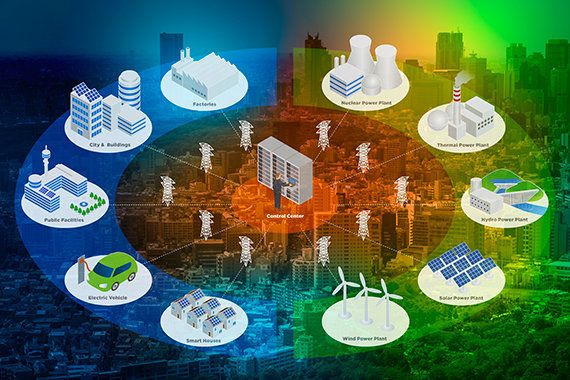The chances are you won’t have heard of vehicle-to-grid technology, commonly known by its acronym V2G. Yet in the next ten to 20 years, it’s likely to become an increasingly familiar part of our lives, and within 30 to 40 years it could utterly transform our concept of energy altogether, making fuel stations, and perhaps even power stations, a thing of the past.

What is V2G?
Think about how the distribution of electricity generally works. When you plug in an electrical appliance at home, the power comes from the national grid, which is, in turn, supplied by power stations that utilise coal, gas and nuclear fuel, as well as renewable energy sources like solar or wind.
It is a centralised network, with power flowing from giant hubs out to where it is needed. Vehicle-to-grid technology turns this idea on its head, because it takes power from an electric vehicle (EV) and redistributes this energy back into the network. In effect, EVs become micro power stations, creating their own localised energy ecosystems.
The most effective illustration is to imagine the energy relationship between an EV and a home. The EV battery is charged at home overnight (when electricity is cheaper). In the morning, when energy use is more expensive, some of this battery energy is used to power hot water for a shower and boil the kettle.
The EV then uses more battery power for the commute, while in the evening the remaining energy is flowed back into the home to help with lighting, cooking, the TV and so on. When everyone goes to bed, the EV recharges and the whole cycle begins over again.
What can V2G do?
Naturally the national grid remains vital, but V2G turns the whole process into a two-way conversation, making it more ‘democratic’. For example, if the national grid is experiencing especially high demand, EV owners would have the option to sell spare electricity back to the network to help make up any shortfall.
While the home-to-car-to-home energy distribution cycle is the most practical way to get across the potential benefits of V2G, this is just one possible configuration.
We’re only now beginning to contemplate the ways in which V2G might operate in the future, especially when combined with ‘smart city’ networks and Internet of Things technology (IoT). Office car parks at work could be used to help power the office building itself and visa-versa. Or imagine for a moment the vast carparks that surround airports. If these cars were all EVs, their energy could be utilised to help power local grids while the owners are away. In return the owners might receive free parking or energy credits.

What are the obstacles to V2G?
V2G technology is available now, but for it to become a regular part of our lives, a number of things need to happen.
Firstly, it goes without saying that electric vehicles need to become the car of choice. As more and more people take up EVs, V2G has an exponentially greater impact. Besides, the additional demand on electricity that would come as a consequence would make it essential that V2G technology runs in tandem to offset this demand and put energy back into the system. Cars spend about 95% of their time unused, so provided they are plugged in, the grid can access their power.
This leads to another question, namely, what if the grid takes power from my car but I need to take it on a long journey?
Here’s where effective algorithms for analysing car usage data are important. This would seek to understand and predict an individual’s car usage, such as their daily mileage and driving habits, to make sure there was enough power for, say, the commute or longer weekend trips.
There’s also the fact that the speed at which a car can charge will be reduced further as the technology develops. Fast chargers currently provide a full charge in about 40 minutes. In the future this might be as little as a few minutes or seconds, meaning that even if the grid has appropriated all of your car’s energy, it can quickly put it back.
How is V2G making a difference now?
Researchers at Aston University have been modelling different scenarios on V2G’s potential, looking at hypotheticals like how it might function during a late-night blackout by transforming a local bus depot’s V2G infrastructure into a backup generator.
Certainly the enthusiastic individual can already explore ways in which they might become completely self-sufficient in energy, using solar or wind to power their house and car, feeding energy from the car back to the house and so on. All that remains out of reach at present is a practical way to feed energy back into the grid.
There is one certainty, however. The energy potential available in EVs is truly staggering.
It’s remarkable to think that the car, for a long time one of the bad guys when it comes to the environment, could hold the key to providing recyclable energy, and in the process making the world a much greener, healthier place in which to live.